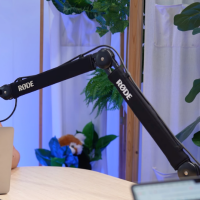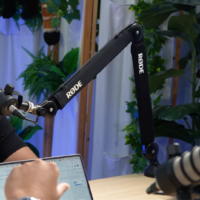You’ve spent time and resources building brand awareness, ensuring your target audience knows your name. But when it comes to the moment of purchase, are they thinking about you, or your competitor?
Many businesses fall into the trap of focusing on awareness without considering salience—the true test of whether your brand stands out when it counts. If customers don’t recall your brand when they’re ready to buy, then all the awareness in the world won’t help you close the sale.
This is where brand salience becomes essential.
As a brand manager or business owner, you need a clear understanding of how strong your brand’s presence is in your customers’ minds at those crucial moments.
In this article, you’ll learn about the most reliable tools and techniques for evaluating it, so you can make sure your brand is not just known—but chosen.
You’ll walk away from this article knowing exactly what brand salience is, why it matters more than awareness, and how to measure it using the right metrics and tools.
What is Brand Salience?

Brand salience is often misunderstood as a simple extension of brand awareness. While awareness means consumers know your brand exists, salience goes a step further—it’s about being top-of-mind when your audience is ready to make a purchase decision.
Imagine you’re in a store, looking to buy a pair of running shoes. Several brands pop into your head immediately, but the one you end up buying is the one that seems most relevant at that moment. That immediate connection, where your brand is not only remembered but also considered the best fit for the need at hand, is brand salience at work.
Brand salience is a measure of how quickly and easily your brand comes to mind, especially in buying situations.
It’s driven by memory structures built through consistent, impactful marketing over time. These memory structures can include things like slogans, visual identity, packaging, and even experiences with your brand.
While brand awareness is important, without salience, awareness may not convert into action. After all, people can be aware of many brands, but only a few will stand out when they need to make a purchase. This is why brands that focus on salience often see better results in terms of customer loyalty and repeat purchases.
In the next section, we’ll explore the key metrics that indicate strong brand salience and how to track them effectively.
Key Metrics to Track When Measuring Brand Salience

Measuring brand salience isn’t just about tracking whether people recognise your brand; it’s about understanding how and when your brand is top-of-mind for consumers, especially when they’re making purchasing decisions.
Here are the key metrics that provide insight into your brand’s salience:
| Metric | Definition | How to Measure |
| Mental Availability | How easily your brand comes to mind in relevant buying situations. | Conduct surveys asking consumers for unaided brand recall in specific product categories. |
| Category Entry Points (CEPs) | The different situations or needs that trigger a consumer to think of your brand or category. | Use surveys and interviews to identify the purchase situations where your brand is most mentioned. |
| Top-of-Mind Awareness (TOMA) | Whether your brand is the first one recalled in its category. | Conduct recall surveys asking, “What’s the first brand you think of when you need [product]?” |
| Share of Search | How frequently your brand is searched online relative to competitors. | Use tools like Google Trends to compare your brand’s search frequency against competitors. |
| Brand Mention Frequency | How often your brand is mentioned in social media, reviews, or organic conversations. | Use social listening tools like Brandwatch to track brand mentions and their context across social platforms. |
Let’s delve into these in more detail:
1. Mental Availability
Mental availability refers to how easily your brand comes to mind in buying situations. It’s not just about how familiar people are with your brand but how quickly and naturally they think of it when they have a need your product or service could fulfil.
To track mental availability, you can use surveys that assess unaided brand recall. Ask consumers, “Which brands come to mind when you think of [your product category]?” Brands that are mentioned first or frequently demonstrate higher salience.
2. Category Entry Points (CEPs)
CEPs are the different situations or needs that trigger a consumer to think about a category and, by extension, a brand within that category. For example, in the soft drink category, entry points could be “feeling thirsty,” “having a meal,” or “wanting a treat.”
Tracking CEPs can help you understand how well your brand is connected to different purchase occasions. The more entry points your brand is associated with, the higher its salience.
Surveys and interviews with customers can help identify which CEPs your brand is linked to and highlight areas where there’s room for improvement.
3. Top-of-Mind Awareness (TOMA)
TOMA measures how often your brand is the first to be recalled within a product category. It is a strong indicator of brand salience, as brands that are top of mind tend to be chosen more frequently.
You can measure TOMA by conducting brand recall surveys that ask, “What’s the first brand you think of when you need [product category]?” If your brand is consistently mentioned first, it shows strong salience.
4. Share of Search
A relatively new but valuable metric, share of search measures how frequently your brand is searched for online compared to competitors. This can act as a proxy for brand salience, particularly in highly competitive categories where consumers actively seek out information before purchasing.
Tools like Google Trends or specific SEO platforms allow you to compare how often your brand is searched versus competitors. A high share of search indicates strong salience because it shows consumers are thinking about your brand when they start their buyer journey.
5. Brand Mention Frequency in Social Media and Reviews
Social listening tools can track how often your brand is being mentioned in organic conversations, customer reviews, or on social media platforms. The frequency and context of these mentions reveal how well your brand is staying top of mind in everyday conversations.
Higher mention rates, particularly in positive or relevant contexts, indicate that your brand is memorable and regularly thought about in connection with key product categories or needs.
Top Tools and Techniques for Measuring Brand Salience
Once you understand the key metrics to track for brand salience, the next step is knowing how to measure them.
The good news is there are several tools and techniques that make this process straightforward.
Whether you’re working with a tight budget or ready to invest in more advanced solutions, here are the best options to consider.
1. Surveys and Brand Recall Studies
Surveys are a classic method for measuring mental availability and top-of-mind awareness. By asking respondents to recall brands in specific categories, you can gauge how easily your brand comes to mind.
- Tools to use:
- Google Forms or SurveyMonkey for simple, DIY surveys
- Jotform or Typeform for more sophisticated options with advanced analytics.
- Why it works: Surveys offer direct insight into what consumers remember and when. By conducting unaided recall studies, you can determine where your brand stands without prompt or bias
2. Social Listening Platforms
Social listening tools track how often your brand is mentioned across social media, forums, blogs, and other public platforms. These tools help you monitor brand mention frequency and sentiment, providing real-time insights into brand salience in organic conversations.
- Tools to use: Brandwatch and Mention are excellent for social listening on a larger scale
- Why it works: By analysing natural conversations about your brand, you get a sense of how often and where it’s being recalled, providing a strong indicator of brand salience beyond surveys
3. Search Engine Data: Google Trends and Share of Search
Google Trends allows you to track search interest in your brand over time and compare it with competitors.
A high share of search (the percentage of total searches for your brand versus others) signals strong brand salience, as it reflects consumer interest and intent to learn more about your brand.
- Tools to use:
- Google Trends for tracking search volume and competitor comparisons.
- Moz, SEMrush, or Ahrefs for in-depth SEO analytics and keyword tracking related to your brand
- Why it works: Monitoring search behaviour provides a clear, real-time indicator of consumer interest. A higher share of search means consumers are actively seeking out your brand, often at crucial moments in their buyer journey
4. Brand Tracking Software
Comprehensive brand tracking tools provide a suite of analytics that cover everything from awareness and salience to perception and loyalty.
These platforms often combine multiple metrics into one dashboard, giving you a holistic view of how your brand performs in consumers’ minds.
- Tools to use: YouGov BrandIndex offers extensive tracking for brand health, including salience
- Why it works: Brand tracking software offers a more robust and ongoing view of brand salience. These tools allow you to continuously measure and refine your strategies, ensuring your brand stays relevant over time
5. Customer Experience (CX) Platforms
Customer experience platforms help you track brand salience through customer feedback and reviews.
These tools offer insights into what customers are thinking at the moment they interact with your brand—whether through purchases, reviews, or social media.
- Tools to use: Medallia or Qualtrics XM are top choices for analysing customer experiences and feedback at scale. Trustpilot is useful for tracking review-based feedback from customers
- Why it works: By analysing real-time customer feedback, you can assess how often your brand is considered and what factors drive its salience, particularly at the point of purchase
Read: Best Customer Feedback Tools for Businesses of All Sizes
With the right combination of these tools, you can measure brand salience effectively, gathering actionable insights that help you understand how well your brand stands out when it matters most.
Analysing and Interpreting Brand Salience Data
Collecting brand salience data is just the first step. The real value comes from analysing this data to make informed decisions that enhance your brand’s position in the minds of consumers.
Here’s how to interpret the key metrics you’ve gathered and translate them into actionable insights.
1. Mental Availability: Identifying Patterns of Recall
When analysing mental availability data, look for patterns in unaided brand recall.
Are there specific situations or needs where your brand is more frequently mentioned? For example, if your brand is recalled more often during certain seasons or buying occasions, this indicates strong mental availability in those contexts.
- What to look for:
- High frequency of recall in specific purchase occasions
- Consistent mentions over time
- Actionable insight:
- If recall is high during certain periods, you may want to reinforce marketing efforts around those times or occasions
- If your brand isn’t coming up often enough, it might be a sign to broaden your marketing efforts to target more diverse scenarios
2. Category Entry Points (CEPs): Expanding Your Reach
CEPs data tells you which purchase triggers or needs your brand is most closely associated with.
If your brand is only linked to a few entry points, you risk missing out on other opportunities to be top of mind. For example, if consumers only think of your brand when they need a “budget option,” but not when they want “high quality,” it could indicate limited salience.
- What to look for:
- Overreliance on a few entry points
- Missed opportunities in related categories
- Actionable insight:
- Expand your marketing campaigns to include more entry points
- Create content, ads, or messaging that ties your brand to a wider range of consumer needs, thus improving your brand’s relevance across more buying scenarios
3. Top-of-Mind Awareness (TOMA): Refining Your Strategy
If your brand has high TOMA in your category, you’re doing something right. However, it’s important to monitor how TOMA fluctuates over time.
If your TOMA is declining or isn’t strong enough, it may be a sign that your marketing messages aren’t as effective as they could be, or that competitors are gaining traction.
- What to look for:
- Declining or stagnant first-place mentions
- Increasing TOMA among competitors
- Actionable insight:
- If your brand isn’t consistently recalled first, it’s time to revisit your marketing approach
- Strengthen brand messaging, focus on differentiating from competitors, or increase visibility through channels where your competitors are gaining ground
4. Share of Search: Tracking Competitive Advantage
Share of search data reveals how much online interest your brand generates compared to competitors.
A high share of search indicates strong consumer interest, while a drop in search volume may signal waning relevance.
- What to look for:
- Declining share of search compared to key competitors
- Spikes in search during specific marketing campaigns or events
- Actionable insight: If your share of search is decreasing, it could indicate your brand is losing relevance. Consider ramping up SEO efforts, investing in paid search ads, or creating more buzz through PR and influencer marketing to reignite consumer interest
5. Social Mentions: Understanding Sentiment and Reach
Social listening data shows how often your brand is mentioned and in what context. However, it’s not just about the number of mentions but the sentiment behind them.
Positive mentions indicate strong brand engagement, while negative or neutral mentions might suggest that your brand is top-of-mind for the wrong reasons.
- What to look for:
- Frequency of brand mentions
- Sentiment analysis (positive, neutral, negative mentions)
- Actionable insight: If your brand is being mentioned frequently but in a negative light, it’s crucial to address the root causes
- Respond to customer feedback, improve product offerings, or adjust your messaging
- If mentions are positive, build on that momentum through more community engagement and customer advocacy campaigns
By analysing these metrics, you can uncover trends, strengths, and areas for improvement in your brand’s salience. This data-driven approach allows you to fine-tune your marketing efforts to ensure that your brand is consistently top-of-mind when it matters most.
Practical Strategies to Boost Brand Salience
After analysing your brand salience data, the next step is applying those insights to strengthen your brand’s position in the minds of consumers.
Whether your brand is performing well or has room for improvement, these strategies will help boost your brand salience, ensuring you’re top-of-mind when it counts most.
1. Increase Mental Availability Through Consistent Messaging
Mental availability is built over time through repeated and consistent messaging.
One key to improving salience is ensuring that your brand’s identity is reinforced across all touchpoints—ads, social media, packaging, and customer experience.
Your brand should deliver a cohesive message, so consumers instantly connect it with their needs.
- What to do:
- Use consistent visuals, colours, logos, and slogans across all platforms
- Develop campaigns that link your brand to common situations or needs that align with your Category Entry Points (CEPs)
- Example: Coca-Cola’s iconic red label and consistent association with “refreshment” make it an easy brand to recall in hot weather or at social gatherings
2. Strengthen Your Brand’s Association with Multiple Entry Points
Category Entry Points (CEPs) show where your brand fits into the decision-making process. To increase salience, work to associate your brand with more CEPs.
The more ways consumers can think of your brand in everyday scenarios, the more often it will come to mind.
- What to do:
- Create content or ads that link your brand to new situations, needs, or emotions
- Collaborate with influencers or sponsors that expand your brand’s reach into new contexts or markets
- Example: Nike isn’t just associated with performance athletics—it also taps into lifestyle and fashion, increasing its relevance in various consumer situations, from working out to casual wear
3. Leverage Emotional Branding to Enhance Recall
Emotion plays a powerful role in brand recall.
Brands that evoke strong emotions tend to have higher salience because they create deeper memory structures.
Whether it’s humour, nostalgia, or empathy, adding emotional layers to your brand messaging can help make your brand more memorable.
- What to do:
- Build emotionally charged ad campaigns that resonate with your audience’s values or experiences
- Use storytelling to connect your brand to key emotional triggers related to your product or service
4. Increase Exposure Across Multiple Channels
To boost your brand’s salience, you need to be present where your customers are.
The more touch points you can create with your audience, the more likely they are to recall your brand in buying moments. Make sure your brand is visible on a variety of digital and offline platforms.
- What to do:
- Invest in multi-channel marketing: social media, email, content marketing, PPC ads, and even offline channels like TV, radio, or print, depending on your audience
- Ensure consistency across channels so that customers get the same message and experience wherever they engage with your brand
- Example: At RedPandas we create more than 50 pieces of content every week and distribute this across multiple channels every single day.
5. Engage Your Audience with Interactive Content and Experiences
Interactive content and experiences allow your audience to engage directly with your brand, making it more memorable and increasing its salience.
Whether it’s through games, quizzes, social media challenges, or interactive ads, direct engagement helps to reinforce your brand in the consumer’s mind.
- What to do:
- Create interactive ads, quizzes, or experiences that connect with your brand’s messaging
- Encourage user-generated content (UGC) or social media challenges that get your audience actively participating with your brand
- Example: Starbucks encourages user-generated content with its seasonal drink challenges, where customers post photos of their drinks on social media, increasing brand exposure and recall
6. Focus on Moments of Truth: The Buying Journey
Salience peaks at moments when consumers are making purchase decisions. It’s essential to position your brand at these critical decision points.
In digital spaces, this can be through targeted ads, search optimisation, or retargeting. Offline, it could involve product placement in stores or strategic packaging that stands out on the shelf.
- What to do:
- Use retargeting ads to remind potential buyers of your brand when they’re considering a purchase
- Ensure your brand has high visibility at retail locations or on e-commerce sites during key buying moments
- Example: Amazon uses retargeting ads to prompt customers to complete purchases on items they’ve shown interest in but haven’t yet bought. This keeps the brand—and the product—top-of-mind during the decision process
By implementing these strategies, you can enhance your brand’s salience, making sure it remains not only recognisable but also memorable and relevant in key consumer moments.
The combination of consistent messaging, multi-channel presence, and emotionally resonant campaigns will help your brand stand out and be the first choice when it matters most.
Building a More Salient Brand for Long-Term Success
In today’s crowded market, simply being known isn’t enough.
Brand salience—being the first brand that comes to mind when consumers are ready to make a purchase—is what truly drives growth. By understanding the difference between awareness and salience, and using the right tools and metrics, you can assess how well your brand is performing in the minds of your target audience.
Remember, brand salience is not a one-time achievement but an ongoing effort.
By continuously monitoring your metrics, refining your strategies, and adapting to consumer needs, you’ll ensure your brand stays relevant, memorable, and preferred—driving long-term success.
Read: How to Improve Lead Quality from Your Paid Media Efforts













